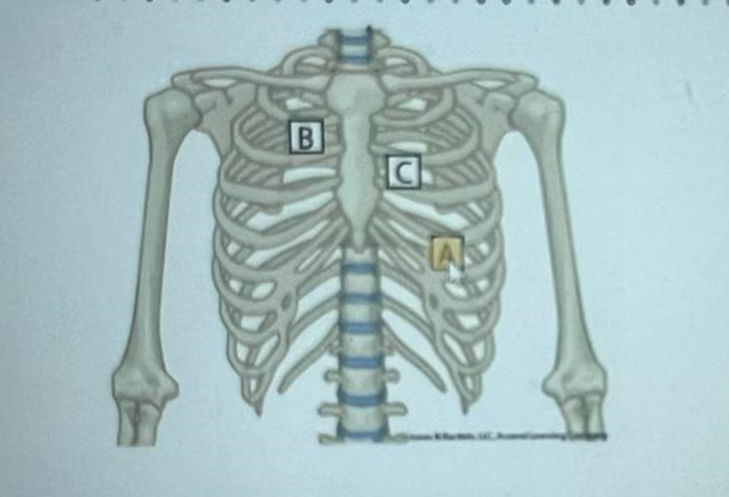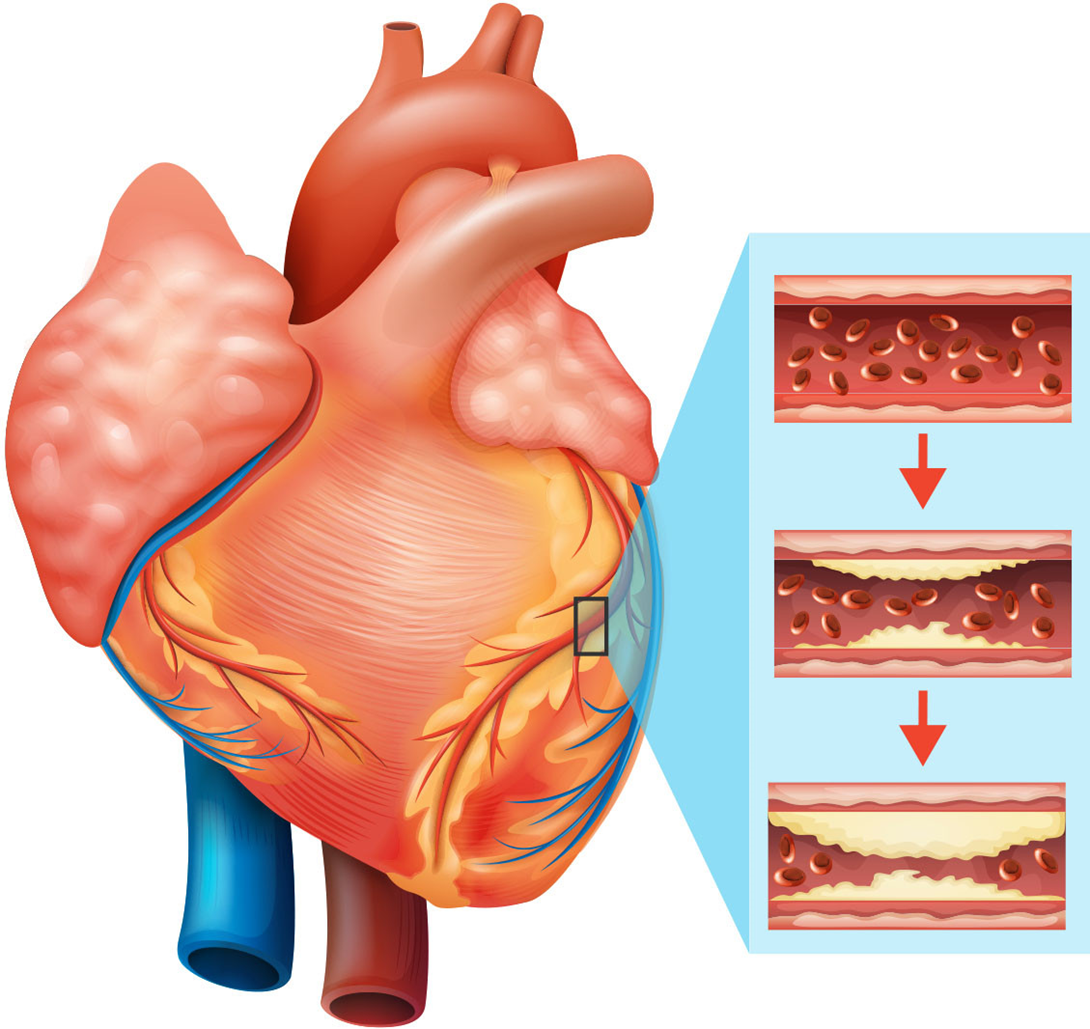A nurse is collecting data from a client during a routine physical exam. Which of the following locations should the nurse identify as the point of maximum impulse?

A
B
C
The Correct Answer is A
Choice A: The fifth intercostal space at the midclavicular line
The point of maximal impulse (PMI), also known as the apical impulse, is usually located in the fifth intercostal space at the midclavicular line. This is the point on the precordium farthest outwards (laterally) and downwards (inferiorly) from the sternum at which the cardiac impulse can be felt.
Choice B: The first intercostal space at the sternal border
The first intercostal space at the sternal border is not typically the location of the PMI. The PMI is usually located in the fifth intercostal space at the midclavicular line.
Choice C: The second intercostal space at the sternal border
The second intercostal space at the sternal border is not typically the location of the PMI. The PMI is usually located in the fifth intercostal space at the midclavicular line.
Nursing Test Bank
Naxlex Comprehensive Predictor Exams
Related Questions
Correct Answer is B
Explanation
Choice A reason: Lard is high in saturated fats, which are not recommended for individuals at risk for cardiovascular disease.
Choice B reason: Canola oil is a healthier option as it is lower in saturated fat and higher in monounsaturated fats, which can be beneficial for heart health.
Choice C reason: Butter is also high in saturated fats and should be limited in the diet of someone at risk for cardiovascular disease.
Choice D reason: Vegetable shortening is typically high in trans fats and saturated fats, which are not heart healthy options.

Correct Answer is C
Explanation
Choice A reason: Resting in a soft chair may provide comfort but does not actively address the stiffness experienced upon ambulation.
Choice B reason: A continuous passive motion machine is typically used postoperatively for knee surgeries, not for routine management of osteoarthritis stiffness.
Choice C reason: Applying moist heat helps to relax muscles and increase circulation, which can reduce stiffness and make ambulation easier.
Choice D reason: Delaying ambulation may lead to further stiffness and is not recommended as regular movement is beneficial for joint health.
Whether you are a student looking to ace your exams or a practicing nurse seeking to enhance your expertise , our nursing education contents will empower you with the confidence and competence to make a difference in the lives of patients and become a respected leader in the healthcare field.
Visit Naxlex, invest in your future and unlock endless possibilities with our unparalleled nursing education contents today
Report Wrong Answer on the Current Question
Do you disagree with the answer? If yes, what is your expected answer? Explain.
Kindly be descriptive with the issue you are facing.
